8 Energy-Efficiency Improvement Opportunities In Electric Motors
When considering energy-efficiency improvements to a facility’s motor systems, a systems approach incorporating pumps, compressors, and fans must be used in order to attain optimal savings and performance. In the following, considerations with respect to energy use and energy saving… Read more
Sep 29, 2014 | By Edvard Csanyi
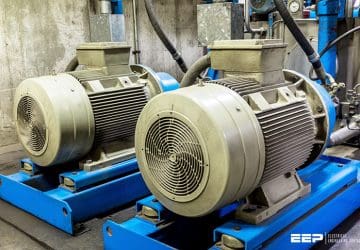
13 features and advances of using electronic soft starters for a motor starting
Soft starters serve for a continuous adjustment of the starting characteristic of three-phase asynchronous motors to the requirements of the load by controlling the voltage across the motor and enable for an optimum integration of the drives in process control… Read more
Jul 14, 2014 | By Edvard Csanyi

Selecting AC induction motors for cement plant applications
This technical article relies on the great paper written by Barton J. Sauer (Siemens Energy & Automation) which goes into essence of selecting the proper AC motor for cement plant applications. Although motors may appear to be the least complicated component… Read more
Jun 18, 2014 | By Edvard Csanyi

How to measure insulation resistance of a motor
If the motor is not put into operation immediately upon arrival, it is important to protect it against external factors like moisture, high temperature and impurities in order to avoid damage to the insulation. Before the motor is put into… Read more
Jun 09, 2014 | By Edvard Csanyi
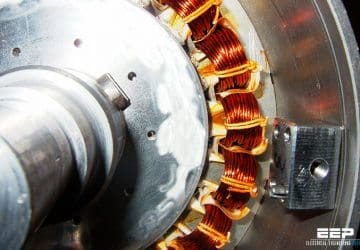
PLC application for reduced voltage-start motor control
Figure 1 shown below illustrates the control circuit and wiring diagram of a 65% tapped, autotransformer, reduced-voltage-start motor control circuit. This reduced voltage start minimizes the inrush current at the start of the motor (locked rotor current) to 42% of that… Read more
Jun 04, 2014 | By Edvard Csanyi

Motor Starting via Chokes or Resistors
The series-connected chokes (Figure 1) or resistors (Figure 2) reduce the voltage at the motor and hence also the starting current. The starting torque is reduced by around the square of the current. At rest the motor impedance is small…. Read more
Mar 07, 2014 | By Edvard Csanyi
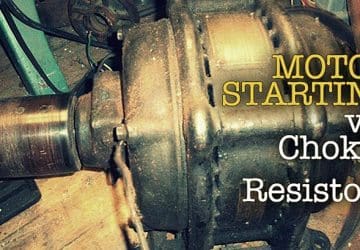
Inspection and test procedures for Rotating Machinery, Synchronous Motors and Generators
Visual and Mechanical Inspection Electrical Tests Test Values Visual and Mechanical Tests Electrical Tests Pictures: Electrical machine wired for electrical testing The Electrical Machines Laboratory TABLE 100.10 – Maximum Allowable Vibration Amplitude TABLE 100.12 – US Standard Fasteners Compare equipment… Read more
Feb 19, 2014 | By Edvard Csanyi

Calculating the short-circuit current across the terminals of a synchronous generator
Calculating the short-circuit current across the terminals of a synchronous generator is very complicated because the internal impedance of the latter varies according to time. When the power gradually increases, the current reduces passing through three characteristic periods: Subtransient (enabling determination… Read more
Jan 13, 2014 | By Edvard Csanyi

Heat as one of the most common cause of motor failure
Heat is the most common cause of motor failure before reaching rated service life. Every increase of 10 degrees Centigrade of a motor’s windings above its design operating temperature cuts the life of the motor’s windings insulation by 50 percent,… Read more
Nov 22, 2013 | By Edvard Csanyi

Identity Card of Every Asynchronous Motor
A motor is characterized by different electrical and constructional parameters which identify its correct application field. The whole of all these parameters constitutes the rating of the machine and is reported on a nameplate positioned on the motor itself. Hereunder… Read more
Nov 18, 2013 | By Edvard Csanyi

Few Words About Stepper Motor (Advantages, Disadvantages and Classification)
A stepper motor is an electromechanical device which converts electrical pulses into discrete mechanical movements. The shaft or spindle of a stepper motor rotates in discrete step increments when electrical command pulses are applied to it in the proper sequence…. Read more
Nov 06, 2013 | By Edvard Csanyi

4 motor designs identified in NEMA MG1
Performance requirements for various types of induction motors for use on standard sinewave power supplies are identified in NEMA MG1. Some of these types of motors are suitable for use in variable speed applications, dependent on the type of application…. Read more
Nov 01, 2013 | By Edvard Csanyi
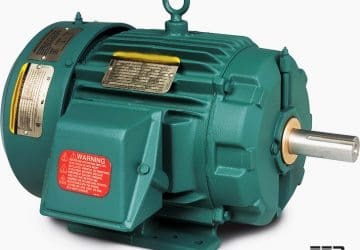
Testing and commissioning procedure for electric motors
It should be noted that the scope of motor testing depends upon the motor type and size, this being indicated on the inspection forms. Motor vibration shall be measured in a tri-axial direction, i.e.: Point x axis – side of… Read more
Sep 20, 2013 | By Edvard Csanyi
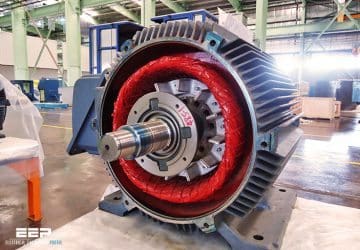
Sizing The DOL Motor Starter Parts (Contactor, Fuse, Circuit Breaker and Thermal Overload Relay)
In this technical article we’ll calculate the size of each part of DOL motor starter for the system voltage 415V, 5HP three phase household application induction motor, code A, motor efficiency 80%, motor RPM 750, power factor 0.8 and overload… Read more
Sep 11, 2013 | By Jignesh Parmar

Drive Design in Electric Vehicles
Good Evening all, in this session I’m going to present some of the issues in drive design in the field of Electric Vehicle. I’ve organized the whole series into modules so that each module can be covered with: Drive Design… Read more
Aug 21, 2013 | By Vishy


